Common problems
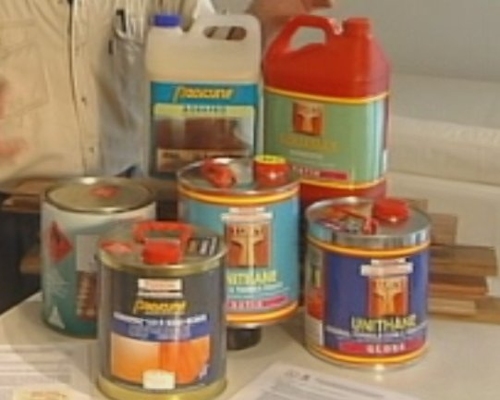 Audio for slide 1 (mp3 |6|KB)
Audio for slide 1 (mp3 |6|KB)
The manufacturer of each product will provide guidelines on how to apply their coating system properly.
They'll also indicate which timber species, other finishing products and environmental conditions will give the best results.
Below are some of the most common problems relating to floor finishes.

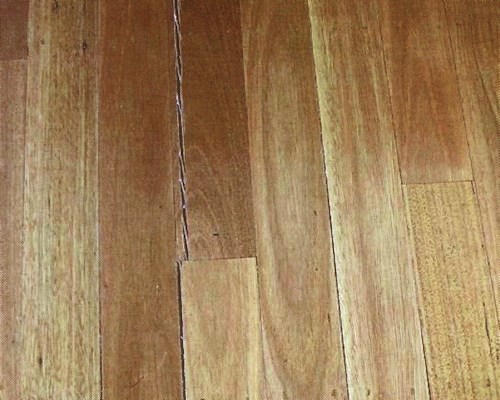 Audio for slide 2 (mp3 |6|KB)
Audio for slide 2 (mp3 |6|KB)
Edge bonding
Edge bonding happens when a coating product seeps into the gaps between boards and glues them together.
If the timber hadn't been properly dried before the coating was applied, the group of boards will shrink together.
This means that instead of a tiny gap opening up between individual boards, the whole panel of stuck-together boards will shrink away from the next panel, increasing the gap size between them.
Apart from the unsightly gap formed between panels, edge bonding can also cause tongues and grooves to split.

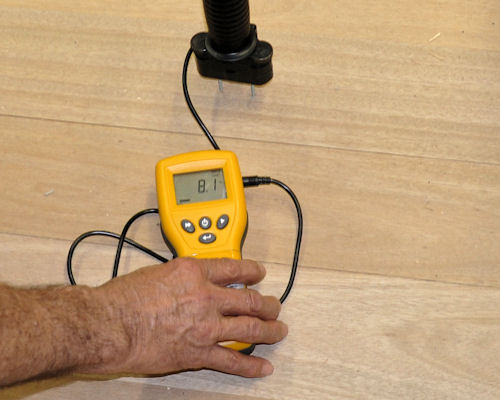 Audio for slide 3 (mp3 |6|KB)
Audio for slide 3 (mp3 |6|KB)
The best solution is to make sure the floor has reached equilibrium moisture content with the surrounding environment before the coating is applied.
You'll find more information on this topic in the unit: 'Inspecting and testing subfloors', in the lesson: Drying timber to EMC.

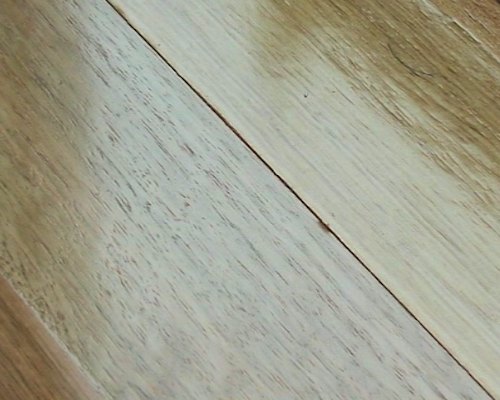 Audio for slide 4 (mp3 |6|KB)
Audio for slide 4 (mp3 |6|KB)
Indicators of a problem floor include boards that aren't laid tightly, and heating or cooling systems that could have an effect on shrinkage levels.

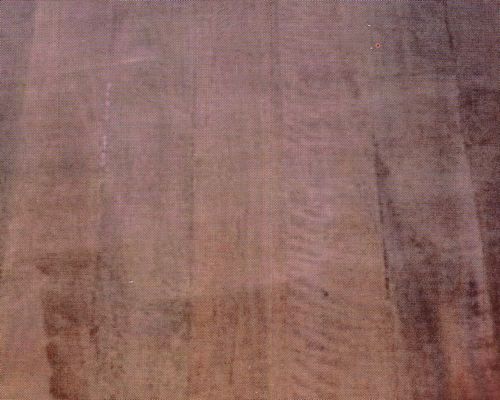 Audio for slide 5 (mp3 |6|KB)
Audio for slide 5 (mp3 |6|KB)
Blooming
Timber species that have high levels of 'extractives', such as waxes, oils and resins, can sometimes develop a condition known as blooming. This is a haze that occurs on the coating when the weather is cold and damp.
Solvent-based polyurethanes are more prone to blooming, because the extractives can dissolve into the coating system.
If you notice a haze on the floor in between coats, clean it off with thinners and add an anti-rejection additive to the next coat. Also make sure the ventilation is adequate, so that the solvent can't build up in the air above the floor.
If the blooming is in the finished floor, you may be able to remove it by waiting three days and then washing it with diluted dishwashing liquid in lukewarm water.

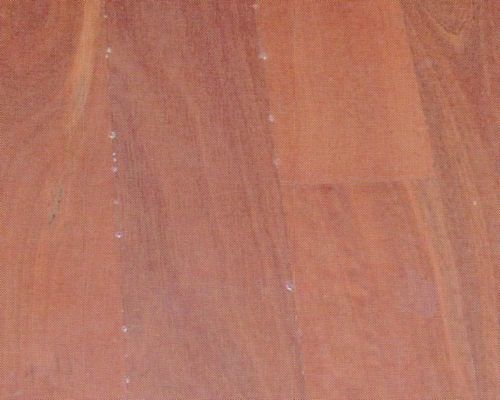 Audio for slide 6 (mp3 |6|KB)
Audio for slide 6 (mp3 |6|KB)
Bubbling
Bubbling along the board edges occurs mainly with direct stick boards, because of the limited space underneath the flooring.
It tends to happen in hot weather as the floor heats up and forces air out at the joints.
One solution to the problem is to avoid coating the floor on a hot afternoon.
Another is to use a slower drying coating product, to give the bubbles more time to escape and burst rather than skin over on the surface.

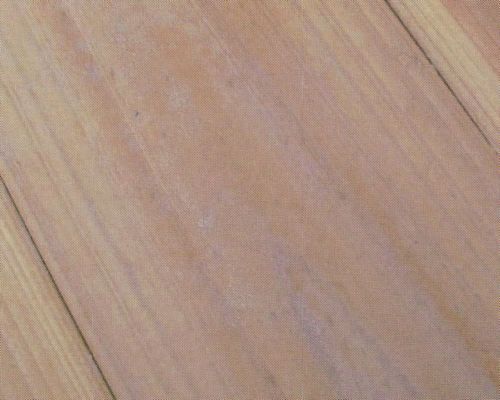 Audio for slide 7 (mp3 |6|KB)
Audio for slide 7 (mp3 |6|KB)
Cold weather crystallisation
Crystallisation appears as a white discolouration in the coating.
It can occur in cold weather with water-based polyurethanes and fast-dry sealers as they dry.
To avoid the problem, always follow the manufacturer's directions relating to minimum temperatures for application. For most products, this is 10° C.

 Audio for slide 8 (mp3 |6|KB)
Audio for slide 8 (mp3 |6|KB)
Changing colours
Exposure to ultra-violet light will gradually change the colour of timber as well as the coating.
Areas that are under floor rugs or furniture may end up being darker or lighter than the surrounding floor.
Solvent-based coatings generally darken more than water-based ones.
The best advice you can give clients is to avoid putting down rugs for six months or so, to give the floor time to gradually change colour more evenly.

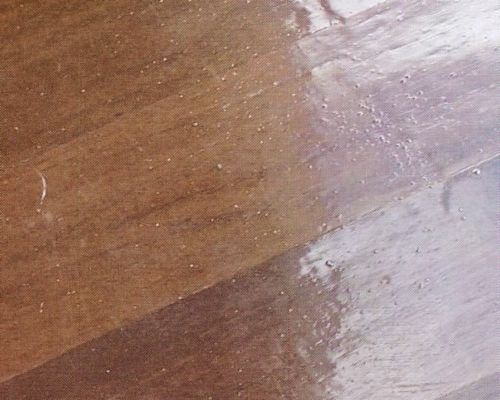 Audio for slide 9 (mp3 |6|KB)
Audio for slide 9 (mp3 |6|KB)
Contaminants
There are lots of contaminants that can float in the room and settle on the floor while it's drying. They include dust particles, hair, insects and grit.
It's common for some dust to appear around doorways and stairwells, and little amounts are acceptable.
Small particles will generally wear off with normal foot traffic over time.
If the particles are larger or cover broader areas, the floor may have to be sanded back and recoated.

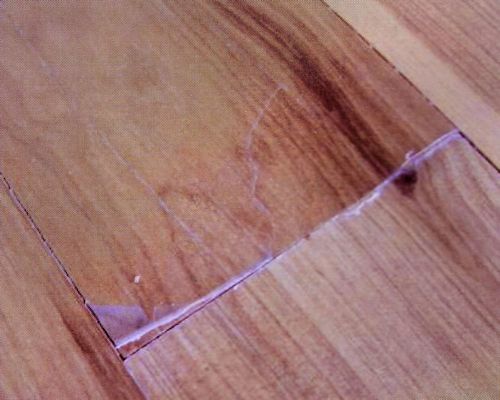 Audio for slide 10 (mp3 |6|KB)
Audio for slide 10 (mp3 |6|KB)
Delamination
'Laminate' means layer, so delamination is the peeling or lifting of the floor coating away from the timber surface.
It can occur at the edges of boards if the tongues and grooves don't fit tightly.
As people walk on the boards, the vertical movement between them stretches the coating and fractures it. Flexible coatings are less prone to delamination under these conditions.
Delamination can also occur between coats if an incompatible product is put on top, or if there is insufficient keying into the previous coat.
In these cases, the floor generally needs to be sanded right back to raw timber and the finishing process started again.

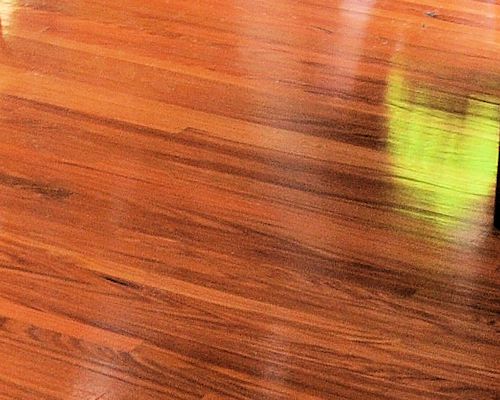 Audio for slide 11 (mp3 |6|KB)
Audio for slide 11 (mp3 |6|KB)
Gloss variation
Solvent-based polyurethanes sometimes show variations in gloss levels. This can happen if the base coat wasn't sufficiently cured or sanded to a uniform finish prior to the final coat being applied.
Satin finishes can also show variations in gloss levels if some areas have dried more quickly than others. This can occur under doorways where there is a draft, or in areas that experienced warmer temperatures because they were finished at different times of the day.
Faster drying times result in glossier finishes.
Most clients accept some difference in gloss levels between rooms, but if there is a significant variation within the room the floor may need to be recoated.

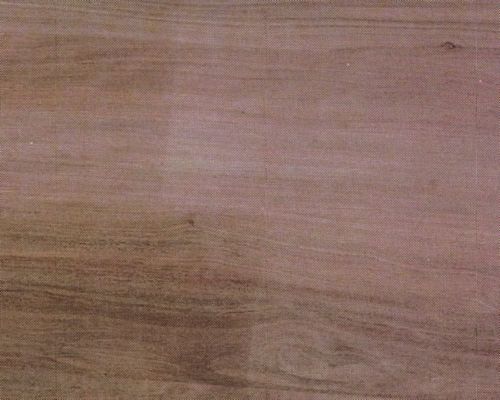 Audio for slide 12 (mp3 |6|KB)
Audio for slide 12 (mp3 |6|KB)
Lap of roller marks
A small amount of lap marking is acceptable, because the slight variations in colour toning are very difficult to avoid when you overlap the roller applications.
It also tends to be less noticeable over time as the colours change in the timber and coating.
The best way to minimise lap marking is to coat along the boards, in the direction of the grain, and avoid patchwork application.

 Audio for slide 13 (mp3 |6|KB)
Audio for slide 13 (mp3 |6|KB)
Orange peel
Orange peel has a slightly rough, orangey appearance.
It happens when the solvent evaporates before the solids in the solution have time to spread evenly over the surface.
To avoid this problem, don't apply the coating during hot weather, and don't spread it too thinly.
You can also use a 'wet edge extender' in the mixture to slow down the evaporation time.

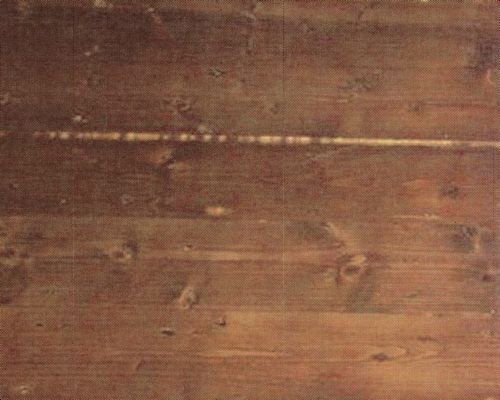 Audio for slide 14 (mp3 |6|KB)
Audio for slide 14 (mp3 |6|KB)
Patchy stain
Stains can appear patchy if they're absorbed at different rates in the timber surface, or are applied in different thicknesses.
As the floor ages, the colour variation is likely to reduce, but if the problem is serious it will still be noticeable.
To avoid the problem in stains that are applied directly to the floor, make sure it is wiped on and wiped off evenly. Also be careful to sand the floor evenly.
The ends of boards tend to take up more stain, so end joints should be filled before the stain is applied.
Dye stains that are mixed into the coating before application are less prone to giving a patchy appearance.

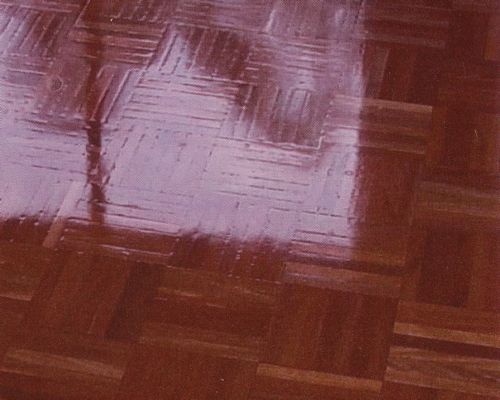 Audio for slide 15 (mp3 |6|KB)
Audio for slide 15 (mp3 |6|KB)
Quilting
Quilting is mostly a parquetry problem. It results from the coating not flowing evenly over fine gaps at the edges and ends of the individual blocks.
To avoid the problem, the coating should be 'flood' filled onto the floor, rather than applied thinly.
Low viscosity (more runny) coatings are less prone to quilting.

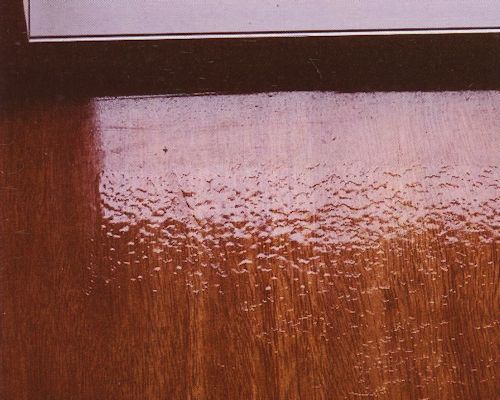 Audio for slide 16 (mp3 |6|KB)
Audio for slide 16 (mp3 |6|KB)
Rejection
When a coating is not compatible with the surface being coated and 'pulls back' rather than flowing over the surface smoothly, the problem is called rejection.
In some cases, rejection is caused by contaminants on the surface, such as silica, household chemicals or waxes.
In other cases, it could be due to an incompatibility between different coating products.
Always check that a particular product is compatible with the flooring surface you'll be coating as well as any other products you're planning to use. Also follow the manufacturer's directions regarding surface preparation and waiting times between coats.
For floors with specific problems, there are sealers and anti-rejection additives that can help to minimise the risk of pull back in the coating.

 Audio for slide 17 (mp3 |6|KB)
Audio for slide 17 (mp3 |6|KB)
White lining or tram lining
White lining is associated with the movement of board edges as they shrink, causing the coating to stretch across the gap.
It tends to occur with water based finishes and vinyl fast dry sealers.
In severe cases, the finish may split and delaminate.
Flooring can shrink if it is not correctly acclimatised before installation.
It can also shrink if there is a change in air humidity levels after installation, such as through having a heating or cooling system turned on.
These issues need to be addressed by the flooring installer before the floor is laid, because once the boards have been fixed in position there is a limit to what you can do as the finisher.
However, if you think that white lining may be a potential problem in a floor, you can advise the client to wait until the boards have shrunk before putting the coating on the floor, and to choose products that are less susceptible to white lining.


Learning activity
Audio 18 (mp3 |6|KB)Carry out your own inspection of a finished timber floor. It may be a job you've completed yourself, or an existing floor you have access to.
Find two different types of imperfections in the coating system.
Name each one, using the correct terminology, and briefly describe how the problem might have occurred. You can also take digital photos to go with the descriptions.





